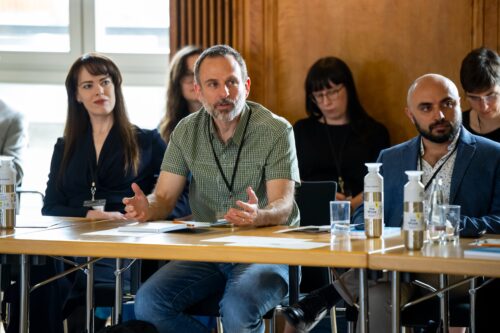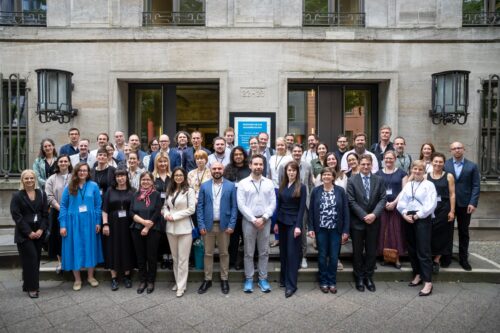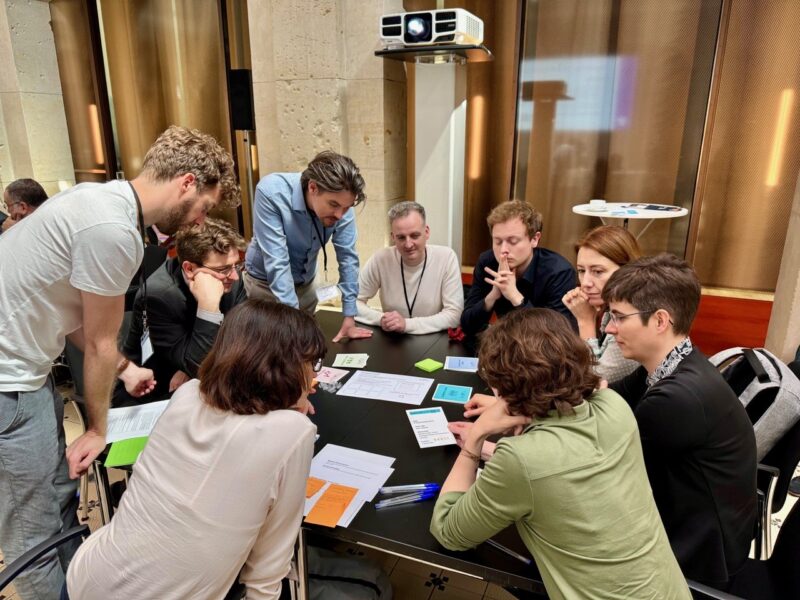The main picture of the article shows the participants of the science advice workshop. Photo by Helen Eenmaa

A meeting of the European Young Academies took place in Berlin on 21-23 May. The meeting was organised by the Global Young Academy and the local Die Junge Academy, and part of the programme was shared with ALLEA (All European Academies). Young Academy Finland was represented by Velma Aho and Laura Berger, members of the Board and the International Matters Group, and Riikka Hiltunen, Science Coordinator.
The meeting was attended by members and staff from 18 different Young Academies. The oldest participating academy was Die Junge Academy, which hosted the meeting and was founded in 2000 as the world’s first young academy. The European Network of Young Academies (ENYA) is growing rapidly, and there were also many very young or fledgling academies, such as the two-month-old Albanian Young Academy. When Young Academy Finland hosted the meeting in summer 2019, the network was still much smaller.

On Tuesday 21 May, the General Assembly of the Young Academies Science Advice Structure (YASAS) was organised, where an important discussion took place on the future of the organisation and the possibilities for expanding its activities. The actual ENYA-ALLEA day was Wednesday 22 May. During the ENYA part of the meeting, a few participating academies presented their successful projects. The challenges and opportunities for cooperation in the operations of Young Academies were also discussed. In the joint ALLEA/ENYA session, the main theme was European research cooperation in a shifting geopolitical landscape.
 On Thursday 23 May, the programme included a workshop on science advice, jointly organised by ALLEA, YASAS and SAPEA (Science Advice for Policy by European Academies). After the day’s exercises, participants gained a better understanding of how these organisations are interlinked and how the European Commission’s science advice process is structured through them. The morning session, which consisted of discussions in pairs and small groups, focused on how cooperation between the academies can be used in science advice. In the afternoon, participants had the opportunity to play a game simulating the SAPEA advisory process, which proved to be a very intense experience with tight deadlines and surprising twists and turns. Real processes are unlikely to be this fast-paced, but many of the challenges in the game were similar to the real thing. For example, the difficulty of assembling a team of experts who meet all the diversity criteria when the experts proposed are mainly experienced researchers from large central European countries. Young academies have a good opportunity to make a difference by ensuring that we propose representatives from earlier career stages to SAPEA working groups.
On Thursday 23 May, the programme included a workshop on science advice, jointly organised by ALLEA, YASAS and SAPEA (Science Advice for Policy by European Academies). After the day’s exercises, participants gained a better understanding of how these organisations are interlinked and how the European Commission’s science advice process is structured through them. The morning session, which consisted of discussions in pairs and small groups, focused on how cooperation between the academies can be used in science advice. In the afternoon, participants had the opportunity to play a game simulating the SAPEA advisory process, which proved to be a very intense experience with tight deadlines and surprising twists and turns. Real processes are unlikely to be this fast-paced, but many of the challenges in the game were similar to the real thing. For example, the difficulty of assembling a team of experts who meet all the diversity criteria when the experts proposed are mainly experienced researchers from large central European countries. Young academies have a good opportunity to make a difference by ensuring that we propose representatives from earlier career stages to SAPEA working groups.


